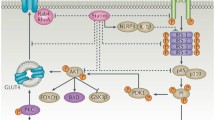Abstract
Preliminary evidence from trials with the HMG-CoA reductase inhibitors (statins), simvastatin and pravastatin, suggests that aggressive treatment of diabetic dyslipidaemia will reduce coronary events. Questions regarding the prevention of cardiovascular events in diabetic patients are now being addressed in prospectively designed trials. The first question is, can aggressive treatment of dyslipidaemia lead to primary prevention of cardiovascular events in patients with type 2 diabetes? This is being addressed in the ongoing Atorvastatin Study for the Prevention of coronary heart disease Endpoints in NIDDM (ASPEN) and the Collaborative AtoRvastatin Diabetes Study (CARDS). These trials will randomize over 4000 patients with type 2 diabetes and no previous myocardial infarction to either atorvastatin or placebo for 4 years. The second question is, are there benefits for aggressive lipid lowering to levels below those recommended in current treatment guidelines, i.e. is lower better? Results from the recent Atorvastatin VErsus Revascularization Treatment (AVERT) trial suggest this to be the case. AVERT showed that, in stable coronary heart disease patients who had been referred for revascularization, aggressive lowering of low density lipoprotein (LDL) cholesterol with atorvastatin 80 mg/day (to a mean level of 2.0 mmol/L [77 mg/dL]) reduced the incidence of ischaemic events by 36% compared with angioplasty and usual care (which reduced LDL cholesterol to 3.1 mmol/dL]). The 36% reduction in events with atorvastatin versus angioplasty and usual care trended towards significance (p=0.048). The benefits of aggressive lipid-lowering therapy are also being investigated in the ongoig Treating to New Targets (TNT) and Incremental Decrease in Endpoints through Aggressive Lipid lowering (IDEAL) trials. These studies will more closely examine the benefits of treating diabetic dyslipidaemia, and will determine how aggressively this abnormal lipid profile should be treated.
Similar content being viewed by others
Author information
Authors and Affiliations
Rights and permissions
About this article
Cite this article
Crespin, S. What does the future hold for diabetic dyslipidaemia?. Acta Diabetol 38 (Suppl 1), S21–S26 (2001). https://doi.org/10.1007/s005920170005
Issue Date:
DOI: https://doi.org/10.1007/s005920170005




